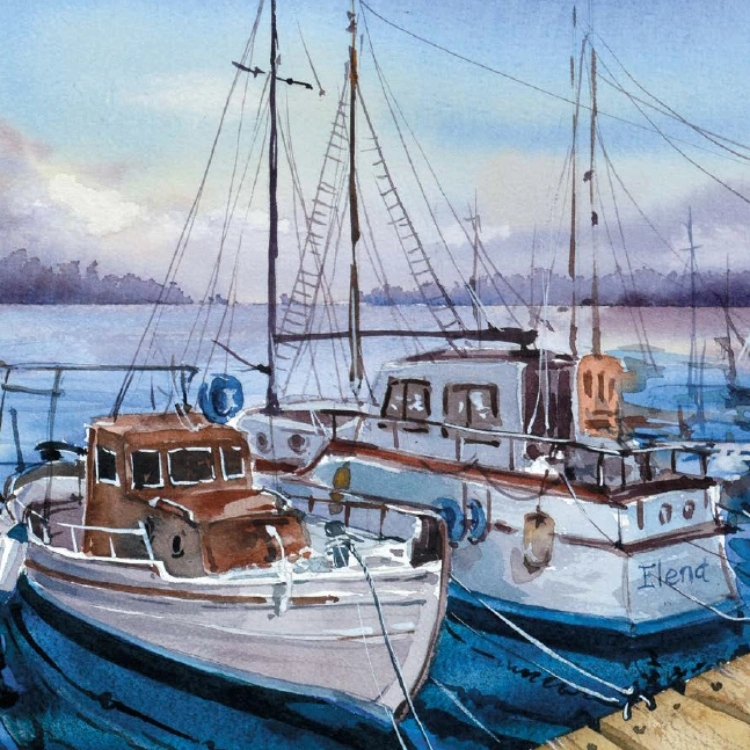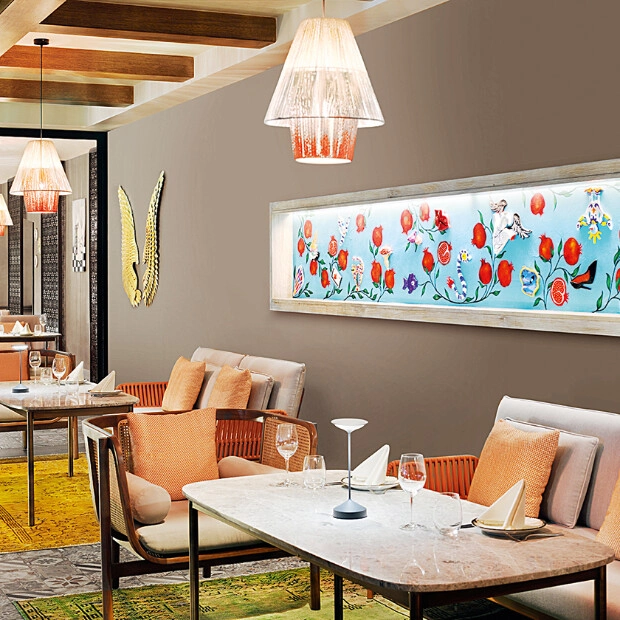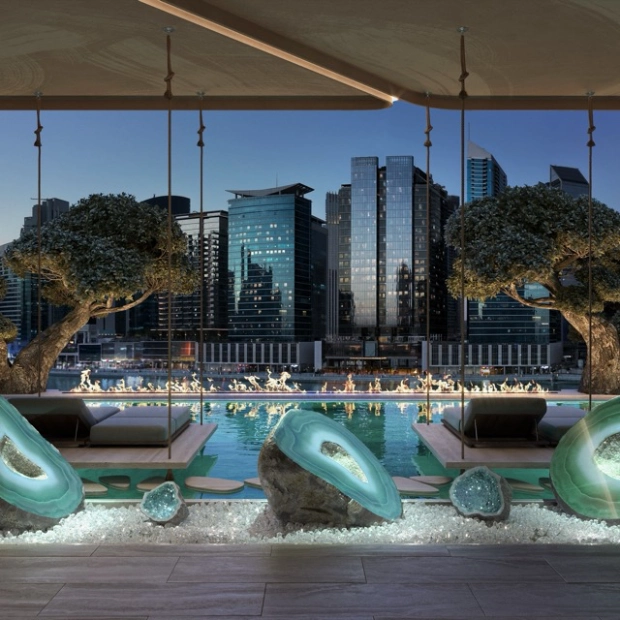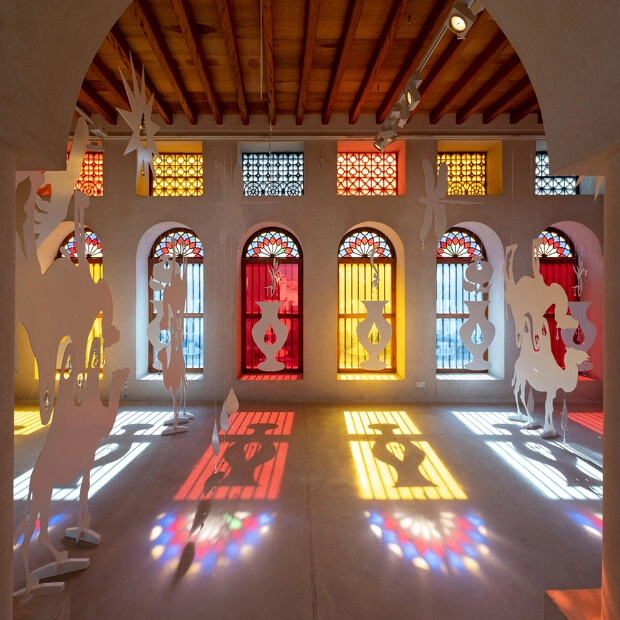Stanislaw Jerzy Lec once bitterly claimed, "People are alone, because instead of bridges they build walls". But there must be someone who realises that any wall of loneliness, boredom, or indifference has the power to destroy whatever ship you've built for yourself. Because utopias that transform into accomplishments are worth it even if only to be able to tell yourself: "This is my happiness; life is more joyful if I can create things". Civil engineer, psychologist, co-owner of the Simple Pleasers restaurant group, and a man who knows how to live deliciously, Mikhail Shorin tells us an amazing story about how you don't have to wait until your dream flashes before you on the horizon. It's better — and more joyful — to go ahead and create it yourself. And you should start not on Monday, but on Thursday. Perhaps with a trip to the bathhouse. As it often goes with the birth of great ideas.
Destiny would appoint Thursday as the day of creation. It was our banya day, and the guys and I went off to discuss our next fishing campaign. It wasn't easy to find a boat that would fit all of us (back then, 10 years ago, there were 20 to 25 of us). And then a light went off: why not build our own ship? Sure, I'd built houses, banks, cottages, and cinemas before…but a ship? I offered to chip in and give it a try. It turned out that, at the Southern port, there was a sheet of metal, just sitting around decaying. It was painted on one side, un-painted on the other. I was shown the painted side, and it was just gorgeous. The other side was "a bit" rusty. Some drunken middle-aged man appeared from a nearby shed and, leaning against it so as not to fall, told us: "I'll sell it to you, no problem". The 43 metre high frame was purchased for 25,000 rubles (then about 500 GBP). Having become the owner of this happy piece of iron, and walking circles around it, I thought to myself: "Well, that worked out pretty well".
The predominant doubts didn't deter me: even looking through textbooks on shipbuilding, I thought it could all be built, and that I could manage it in a year and a half, starting with this piece of iron. I went to a Dutch shipyard, saw how they were building ships there, and I realised I should aim for finishing it in three years. At that point, my "banya friends" gave up on it, complaining that the project would take too long, saying it wasn’t even necessary after all. They withdrew their funds, and I was left alone with my dream, which seemed to everyone else purely utopian.
True, it wasn't a realistic dream, but it was big, and happy. In Holland, they said that the many stages of ship construction usually require up to 150 engineers, designers, and technologists, and that the slipway (that the ship is mounted on) could cost as much as 1.5 million euros. Thinking about how to connect that reality to the realities in Russia, and estimating the budget we were working with, we were forced to cut staff by 148 people, leaving only two. I couldn't fire myself: the project would have lost all its meaning, and a driver was necessary for the project. So, with the two of us, and also the company of faith and stubbornness, I carried the idea on my shoulders.
One of the things required was a very complicated device that, using a laser, can calculate whatever your heart desires. I looked carefully at their slipways. Russians, however, are a far sighted, enterprising people, and my Jewish roots tell me how to make the most out of things. So I made the most of it: I bought four tram tracks for 10 thousand rubles, along with the car that carried them, and two laser rulers from the store. For two thousand dollars, I got what the Dutch had tried to sell me for half a million euros. That was extremely pleasing. It was also more fun. In Nizhny Novgorod, at the federal Rosrezerv, I bought some special gardening steel, which had lain there for 20 years before I picked it up. It turned out it was made using additives that were totally immune to electrodes. We had intentionally made the composition for electrodes, to weld this steel. Once we welded it, it turned out to be capable of breaking ice, and somehow, resistant to rust, even if left unpainted.
It'd been about a year and a half since we began construction. I had completed almost the entire body when I realised there were another four years ahead. When the body was ready, we tracked down the only crane we could find in Moscow that could lift 150 tons, in Lytkarino. It would be needed to move the body from the shore into the water. The weight of the frame was almost enough to break the crane. Nonetheless, there it arrived, successfully and very impressively, right over the water. The launch was a very happy and fasci-nating moment.
After that, we took a tugboat to the Belgorod Shipyard, and I was told that ships had actually been built there before. When we finally got to the fac-tory, six friendly men came out to take a look at the madman who had want-ed to build a ship there. I had to hire full fledged staff to work at the plant where the ship would be built. For two and a half years, my team and I built my ship at the Belgorod plant. All but the steel that went into the hull was imported. Of course, we had a lot to learn. But it wasn't burdensome. I built my ship. In fact, building a ship is like some sort of internal sandbox game.
I guess it stems from my childhood. The desire to build is in my blood at a genetic level: my father is a chemical engineer, my mother spent her life designing thermal power plants, my brother was educated at MIIT. My own education — in architecture and construction — plus the influence of my family, all involved in engineering, allowed me to think that I was also equipped to accomplish something. Whenever I told anyone that I was building a ship, they thought I was out of my mind. People would come to see if there really existed someone in this country who was trying to build a ship. Amusingly, I had a meeting with the head of the Russian River Register. You can't build a ship in Russia without the supervision of the RRR. They record every action in a special magazine and they all have to be signed for. We would eventually sign for some 1.5 thousand matters of permission and approval. I'd been told that all of the rules under the River and Marine Registers are supposedly written in blood, because, before the rules were introduced, people would either drown, or else some other misfortune would occur. That's why the people who work there are of a different breed, untouched by capitalism. They're just different… It's impossible to negotiate with them. Strangely enough, though, they do have a conscience. They do try to do everything right. The head of the Russian River Register asked me one question and one question only: "Do you really want to build a ship?" Really, if I were to translate it into Russian, he was asking me if I was mentally stable.
The process lasted eight years. Nothing to fit our ship could be bought at the store. Everything was designed and manufactured specifically for this very ship. Therefore, the final touches aren't the ship itself, but the heart, the "filling," so to speak. It's in the motors, the diesel engines, generators, navigation system, drainage system… And in the design… When I was told how much the design of this boat would cost, I thought back on how I had bought the tracks. And I decided to consult three or four different designers. I combined their opinions into one general under-standing and it became clear that I'd have to do it myself; no designer would be willing to work for so long. There are, as a result, almost 20 different types of wood inside the ship: rosewood, tiger tree root, birch, teak… And also a home theater, karaoke room, Turkish Hamam, six guest bedrooms, five crew member bedrooms, and a kitchen.
Whenever that original group of friends and I would go to the banya, they always asked how the ship building was going. And, whenever I showed up, everyone would laugh. I not only gave them their money back, but I also gave them years of entertainment. Then, in the end, I invited them all. The loud laughter turned into a dead silence. People walked around in silence for an hour, then drank vodka, and then watched a film about how the ship they were on was built.
So the dream came true, but I won't let myself stop there. Once you're hooked on the activity of creation, you can't let go. The Kabbalah states that builders are people who once wanted to reach God by creating the Tower of Babel. And that's why he destroyed the tower and gave them all different languages, so they wouldn't be able to communicate with each other and build something so ambitious. Ever since then, the builders of different countries, in their own languages, use bricks to build something they can reach out and touch, something they can create. Maybe that's the most beautiful utopia of humankind. But, if we reach, the utopia can turn into reality.







